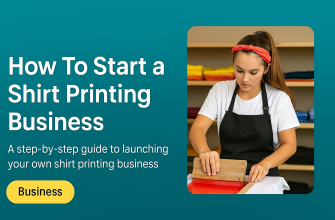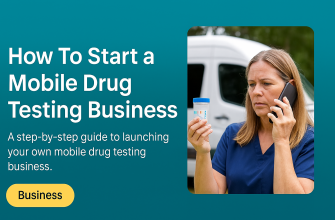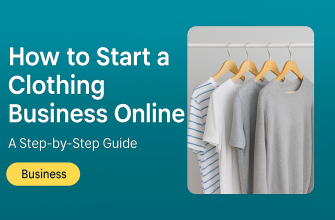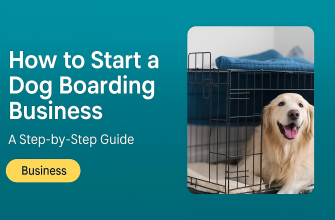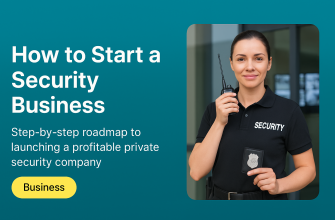If you’ve been dreaming of starting your own party planning business, you’re in the right place. I’m Alex Rivers, a business coach for women, and I’m here to guide you step-by-step through this exciting journey. The events industry is already one where women shine (around 77% of event management professionals are women), and more women are launching and leading their own event companies than ever – the number of women-led event businesses jumped by 40% in just three years. Demand for event planners is strong, too; the global events market was valued at over $700 billion in 2021 and is on track to reach trillions by 2035. In other words, there’s never been a better time for you to claim your space in the party planning world.
This guide will blend practical how-to steps with a healthy dose of motivation. By the end, you’ll know how to identify your niche, handle the legal must-haves (like permits and insurance), set up your services and pricing, build a portfolio of events, find your first clients, and maintain a success-oriented mindset as a new entrepreneur. Let’s get started on turning your party planning dream into a thriving business!
- Step 1: Identify Your Niche and Vision
- Step 2: Handle the Legal Basics (Licenses & Insurance)
- Step 3: Define Your Services and Pricing
- Step 4: Build Your Brand and Portfolio
- Step 5: Market Your Business and Land Your First Clients
- Step 6: Embrace an Entrepreneurial Mindset
- You’ve Got This – Time to Plan Your Success!
Step 1: Identify Your Niche and Vision
Every successful party planning business starts with a clear niche and vision. Party and event planning is a broad field – do you want to organize kids’ birthday parties, luxury weddings, corporate events, bridal or baby showers, or something else? Defining the types of events you’ll specialize in will help you stand out and attract the right clients. Take some time to brainstorm and ask yourself: What kind of events light me up with excitement? Perhaps you’re great at crafting whimsical themes for children’s parties, or you have a passion for elegant decor that would shine in wedding planning. Maybe you love the fast-paced corporate world and want to plan company networking events or conferences. There’s no wrong answer, but focusing on a niche (at least to start) will give you a target to aim your marketing and allow you to build expertise faster.
Research your local market and competitors as well. Look at what other planners in your area are doing and identify gaps you could fill. For example, if your town has plenty of wedding planners but no one specializing in kid-friendly events, that could be an opportunity. Or maybe there’s a demand for budget-friendly DIY event consulting, or conversely a high-end concierge party service. Define your unique value proposition – what will make your party planning services different from others? It could be your personal style, your cultural perspective, your focus on sustainability (eco-friendly parties), or even your background (maybe you’re a former corporate manager who can plan business events with ease). Clarity on your niche and vision will guide everything else, from your branding to the services you offer.
Actionable Tip: Write down a one-sentence mission statement for your business that captures your niche and the value you bring. For example: “We create magical, stress-free children’s parties that busy parents and happy kids adore,” or “I plan elegant, intimate weddings with a modern, personalized touch.” This will serve as your North Star and even help later when crafting marketing messages or an elevator pitch.
Step 2: Handle the Legal Basics (Licenses & Insurance)
Before you start booking clients, you’ll need to make sure your business is set up on solid legal ground. Register your business and obtain any required licenses or permits to operate in your city/state. Event planners generally don’t need a special professional license to perform planning work; however, you will likely need a general business license (often called an occupational license) from your city or county. Check your local government or state business office website for the specific requirements in your area. Typically, registering a small business is a straightforward process and may cost a modest fee (often around $50–$100 for a business license in many areas). If you plan to collect sales tax for services or resell any items (like party supplies), you might also need a sales tax permit. It’s wise to decide on a business structure (sole proprietorship, LLC, etc.) early as well, since that can affect your registration and taxes. Many small event planners start as sole proprietors or single-member LLCs. An LLC can offer personal liability protection – something to consider once you start getting clients – but it might involve slightly more paperwork and fees to set up. Do a bit of research or consult a local small business resource (or lawyer) if you’re unsure which structure is best for you.
Next, let’s talk permits and insurance, which are critical for an events business. In most cases, you won’t need a specific “party planner license,” but certain events might require special permits. For example, if you plan an event in a public park or city street, you or your client may need to obtain a special events permit from the local authorities. If the event will involve alcohol, ensure the venue or caterer has a liquor license or you might need to arrange one. These permits are usually handled per event, but as the planner, you should know about them to guide your clients and avoid legal hiccups.
Equally important is business insurance. It might not be the most exciting part of party planning, but it’s a must for protecting yourself. At minimum, consider getting general liability insurance for your business. This covers you in case accidents happen during an event – for instance, if a guest trips over a decoration or a child gets hurt on a rented bounce house, you want insurance to handle any claims. (Yes, things like that can happen even at the best-planned parties! Insurance can protect you whether a wedding cake accidentally topples or a client is injured tripping over a chair at an event.) Liability coverage gives both you and your clients peace of mind. Additionally, as your business grows, you can explore professional liability insurance (sometimes called errors & omissions insurance) which covers claims if a client alleges you made a mistake or negligence that caused them a loss – for example, if an oversight on your part leads to a major issue. While not always required to start, having insurance from the beginning is a smart move. Many clients (especially corporate ones) might actually require that you carry liability insurance before hiring you, so it boosts your credibility too.
To sum up the basics: register your business, obtain your local business license, and get insured. These foundational steps ensure you’re operating legally and responsibly. It might be a bit of paperwork now, but it will save you headaches down the road. (Pro tip: Keep digital copies of your license, permits, and insurance policy – you’ll want to be able to provide proof to venues or clients if asked.) With the legal stuff in place, you can focus on the fun part: planning amazing parties!
Step 3: Define Your Services and Pricing
Now let’s drill into what you’ll actually offer and how you’ll charge for it. As a party planner, you can provide a range of services. It’s important to clearly define these so clients know what to expect (and so you know how to price your work). Start by outlining the scope of services you’re prepared to handle. For example, common service offerings for event planners include:
-
Full-Service Planning: You handle everything from start to finish – designing the theme, finding and coordinating all vendors (caterers, venues, entertainers, etc.), managing the event on the day, and overseeing cleanup. Essentially, you take the entire event off your client’s plate.
-
Partial Planning or À La Carte Services: Perhaps a client only needs help with certain pieces. You might offer vendor coordination only, day-of-event management, or consulting on design while the client handles the rest. Decide if you’re open to more limited service packages.
-
Specific Niche Services: Depending on your niche, you might have specialized offerings. For instance, if you’re focusing on kids’ parties, you could have a “Party-in-a-Box” package where you provide themed decorations and a plan for games. Or if you plan weddings, you might offer day-of coordination (a popular service for couples who did planning themselves but need someone to run the show on the wedding day). Define what you don’t do as well – for example, you might not handle catering directly (you coordinate a caterer instead), or you don’t provide certain equipment yourself. Clearly outlining this will help set client expectations.
Once you know your service list, tackle the big question: pricing. Pricing your party planning services can be tricky for new entrepreneurs – you want to be competitive and attract clients, but also ensure you’re covering your costs and valuing your time. A good starting point is to research what other planners in your market charge. Different pricing models are common in this industry, such as:
-
Percentage of Event Budget: It’s common for event planners to charge a fee that is a percentage of the total event cost. Industry averages are around 15% of the event’s budget as a planning fee. For example, if you plan a wedding with a $20,000 budget, a 15% fee would be $3,000 for your services. This model ensures your fee scales with the size and complexity of the event.
-
Flat Package Rates: Especially for smaller-scale parties (like a birthday party for 30 people), you might choose a flat fee or package price. For instance, you could charge a fixed $500 for a basic kids’ party package (with defined services included) or a set amount for a “day-of coordination” service. Just be sure to clearly outline what’s included so both you and the client know the scope.
-
Hourly Consulting Rate: In some cases, you might offer consulting by the hour (for example, $X/hour to brainstorm ideas or help a client who just needs guidance). Many planners offer an initial free consultation and then an hourly rate for planning advice if the client isn’t hiring you for full planning.
When setting prices, calculate your own costs: time spent planning, any assistants you need to pay on event day, transportation, marketing, insurance, etc. Don’t undervalue yourself, but as a newcomer you might start slightly lower than more seasoned competitors while you build your portfolio. Just make sure you’re not operating at a loss. It’s perfectly acceptable (and advisable) to require a deposit upfront (often 50%) and the remainder by a certain date, so you have cash flow and protection against last-minute cancellations. Also, always use a simple contract with clients that outlines the services, fees, payment schedule, and what happens if the event is canceled or changed – this protects both parties and sets professional tone.
One more tip: be clear on any hard costs that are not included in your fee. Typically, the client covers all the actual event expenses (venue, food, decor rentals, etc.) and your fee is for your planning service. You’ll either have the client pay vendors directly (common approach) or you pay on their behalf and bill them – but the latter requires careful accounting. Many new planners choose to have clients pay vendors directly to keep things simple, and you just invoice for your services. Figure out which approach you’re comfortable with, and communicate it. Having your services and pricing well-defined not only helps you look professional, it also gives you confidence when pitching to clients because you know exactly what you offer and at what price.
Step 4: Build Your Brand and Portfolio
When you’re just starting out, one of the challenges is that you don’t have a track record or portfolio yet – but you need one to attract clients. Don’t worry, every successful planner started from zero, and there are ways to build up your portfolio and brand image quickly. First, work on the basics of your brand: choose a business name (something memorable that fits your style), create a simple logo or even just a nice wordmark of your business name, and establish an online presence. In today’s world, many clients will discover or vet you via the internet, so at the very least set up a Facebook page or Instagram account for your business. A simple one-page website with your services and contact info is great too, if you can. You don’t need anything fancy or expensive to start – there are free or affordable templates for sites, or you might even use a platform like Etsy or Fiverr to get a budget-friendly logo and site set up. The key is consistency: use the same business name, logo, and colors across all platforms so you look put-together and professional.
Now, how to fill that portfolio with work before you have paying clients? You may have to get creative and proactive here, but it’s absolutely doable:
-
Leverage Friends and Family: Offer to plan a celebration for someone you know at low cost or just charge for materials. Perhaps your cousin has a baby shower coming up, or a friend’s child has a birthday – volunteer your planning expertise as a gift (just be clear on what costs the friend might need to cover). In exchange, make sure you can take lots of pictures at the event and get a testimonial from them afterwards.
-
Stage a Mock Event or Styled Shoot: If you don’t have any real events to plan immediately, create your own! Design a styled table setup in your backyard or living room as if it were a mini-event, complete with decorations, place settings, etc. This is common in the event industry – planners and decorators will collaborate to do a styled photoshoot of, say, a mock wedding reception table or a kids’ party dessert table, to showcase their design ideas. You can partner with a local photographer who is also building their portfolio – they take pro photos of your setup (good images are gold for your website and Instagram). Even just using a decent smartphone camera and good lighting, you can generate some nice visuals of your work.
-
Team Up with Vendors: Introduce yourself to other small businesses in the party space. For example, a local baker might love to have you plan a small showcase party for their new cake designs – you plan a cute display event in exchange for using the cake in your portfolio photos. Or connect with a florist, caterer, photographer, entertainer, etc., and see if you can collaborate on a low-cost community event or an open house. This not only gives you portfolio material, but also starts building your network of go-to vendors.
-
Volunteer or Do a Charity Event: Many non-profits host fundraising galas, community festivals, or holiday events and could use planning help. Offering your services pro bono for a charity event can give you experience, contacts, and something to feature in your portfolio (plus it feels great to contribute to a cause). Just be sure to still take credit publicly – e.g., ask if you can put your business sign up at the event or be listed in the program as the event coordinator.
As you do these initial events (whether paid or volunteer), treat them like real business projects: Document everything. Take photos (clear, well-lit shots of decorated tables, venue setups, happy attendees, etc., with permission). Save artifacts like invitations or planning documents if they show your work. After each event, kindly request a short review or testimonial from the host/client – even a sentence about how you made their event wonderful can be gold for your website or social media.
Simultaneously, build out your online portfolio. This could be a dedicated gallery page on your website or simply an Instagram grid that shows off your events and styled setups. Before-and-after shots can be compelling (e.g., a plain room versus the decorated party space after you worked your magic). Don’t forget to also craft a little narrative about you – on your site or social profile, share your story and passion for party planning, especially emphasizing anything that resonates with your target audience (for instance, “As a mom of three, I know how overwhelming planning a kid’s birthday can be – that’s why I love helping other busy moms create unforgettable parties without the stress,” if that’s your niche). This helps begin to establish trust and a personal connection.
Building a brand is not just visuals – it’s also how you present yourself and your business values. Are you the fun, funky DIY party planner, or the ultra-detail-oriented luxury event coordinator? Lean into what makes you you, because that authenticity will attract clients who want exactly what you offer. Over time, as you gain clients, your portfolio will naturally grow. But these early steps will give you a foundation to proudly show off even when you’re brand new.
Step 5: Market Your Business and Land Your First Clients
“Marketing” might sound intimidating, but it’s really about letting people know who you are and how you can help them. In the beginning, it’s true that you’ll need to hustle a bit to get those first few clients. In fact, when starting your party planning business, expect to invest a significant chunk (possibly 30% or more) of your early budget into marketing. This could include creating a website, printing business cards, advertising online, and attending networking events. Don’t be discouraged by that number – you won’t always spend that much on marketing, but early on you’re essentially buying awareness. The goal in the first few months is to get your name out there and secure your base of customers as quickly as possible. Once you deliver fabulous events and make clients happy, they will recommend you to others, and your need to spend on marketing will decrease as word-of-mouth kicks in. But to get that ball rolling, here are some marketing strategies to focus on as a new party planner:
-
Tap Your Personal Network: Tell everyone you know about your new business! Announce it on your personal social media, send an email to friends and family, and casually mention it in conversations. Your immediate network can be a great source of referrals – e.g., a coworker of your cousin might be looking for a baby shower planner. You never know, so make sure people know what you do.
-
Social Media and Online Presence: Leverage platforms like Instagram, Facebook, Pinterest, and even TikTok if you’re comfortable on video. Party planning is visual, so social media is your best friend. Post those portfolio photos you gathered in Step 4. Use relevant hashtags (e.g., #PartyPlanner, #EventPlanner, plus local tags like #DallasEvents or #NYCPartyPlanner). Share behind-the-scenes snippets of you prepping decor or visiting a venue – this not only markets your service but shows your enthusiasm and process. Also, engage with local community groups online (for instance, if there’s a Facebook group for moms in your city, be an active helpful member and mention your services when appropriate).
-
Local Networking and Partnerships: Consider attending local business networking events, chamber of commerce mixers, or industry meetups (like wedding vendor meetups if you do weddings). Face-to-face networking can lead to referrals. Introduce yourself to venues and vendors in your niche – for example, if there’s a popular event venue or a party supply store in your area, see if you can drop off business cards or flyers there. Maybe you can co-host a small open house or workshop (like “free party planning tips” seminar at the local library or a cake shop). Building relationships can get your name on preferred vendor lists; for instance, a banquet hall might recommend you as a planner to clients who rent the space.
-
Directories and Listings: Make sure to claim a Google My Business listing for your company so that you appear in local search results (e.g., “party planner near me”). Encourage early clients to leave you a Google review. You can also list your services on sites like Yelp, Thumbtack, or event planning marketplaces. While some paid advertising on Google or Facebook can help, use them strategically so you don’t blow through your budget too fast – targeted local ads (like an ad on Facebook aimed at newly engaged women in your city if you’re a wedding planner) can be effective.
-
Introductory Offers or Packages: To entice your first clients, you might offer a limited-time promotion – for example, a free add-on (like “free dessert table setup for the first 5 clients” or a small discount for the first event). You could also create a referral incentive, e.g., “Refer a friend and get a $50 gift card after their event booking,” to encourage happy early clients to spread the word. Be careful with heavy discounting (you don’t want to undervalue yourself too much), but small bonuses or extras can help nudge someone to take a chance on a new planner.
-
Showcase Client Testimonials and Events: As soon as you have even a couple of happy clients, ask if you can share their testimonial and maybe a few photos from their event (most will be delighted to be featured). Use these in your marketing materials and on social media – people trust peer experiences. “Social proof” goes a long way in convincing others that you’re talented and reliable.
Remember, the key to marketing is consistency and persistence. You might not get a ton of calls in your first week or even month, but keep at it. Update your social media regularly with fresh content, continue networking, and follow up on any leads. Perhaps set a goal like “introduce myself to one new vendor or local business a week” or “post 3 times a week on Instagram.” Over time, your presence will grow. And as you start landing gigs, focus on delivering an exceptional experience to those clients. Not only will that make them repeat customers, it will also turn them into your evangelists. If you deliver on the promise of creating memorable events, clients will stick around and recommend you to others, meaning your reputation will start to market for you. Soon, you’ll go from hustling for every lead to having inquiries show up in your inbox organically. It just takes those first few successes to gain momentum!
Step 6: Embrace an Entrepreneurial Mindset
Starting a business isn’t just an external journey of checklists and steps – it’s also an internal journey. As a new entrepreneur, especially as a woman stepping into a field you’re passionate about, cultivating the right mindset will be crucial to your long-term success and happiness. Let’s talk about a few mindset tips to keep you empowered:
-
Believe in Your Value: It’s normal to feel some self-doubt when you’re new (“Am I really cut out for this? Will clients trust me since I’m just starting?”). Combat those thoughts by remembering your why – you love planning events and you have a vision for helping people celebrate! Affirm to yourself that you bring a unique value to the table. Everyone starts somewhere, and clients will be lucky to have your dedication and fresh perspective. Don’t apologize for being new; instead, be confident in how your enthusiasm and personal touch make up for any lack of years in business.
-
Embrace Learning and Persistence: Entrepreneurship is a continuous learning experience. Not every event will go perfectly, and not every client inquiry turns into a booking – and that’s okay. Rather than seeing challenges or setbacks as failures, frame them as lessons. Maybe you lost a client to a competitor; use it as fuel to improve your pitch or understand what clients value. Perhaps an event had a hiccup (like a vendor arriving late) – that’s an opportunity to refine your contingency plans. Keep a growth mindset: you can always improve, and each experience is making you a better planner and business owner.
-
Stay Organized and Consistent: It’s easy to get overwhelmed juggling multiple responsibilities (working in events and on the business). Develop habits that support you: use a planner or digital calendar religiously, create checklists for each event, and set aside regular time for admin tasks like updating your finances or scheduling social media posts. Consistency builds confidence – for example, if every morning you review your task list and every week you reach out to one new contact, those small routines will compound into big results over time.
-
Set Boundaries and Self-Care: When you’re passionate about your business, you might be tempted to work 24/7, especially in events which can demand odd hours. But burnout is real and can dampen your creativity and enthusiasm. Remember that you are the most important asset of your business. Schedule downtime and stick to it – whether that’s a weekend off after an event, or evenings when you disconnect. Communicate boundaries to clients in a professional way (for instance, you respond to non-urgent emails only during business hours). Most clients will respect this, and you’ll perform better when you’re not running on empty.
-
Build a Support System: Surround yourself with people who uplift you. Join communities of fellow women entrepreneurs or event planners – there are many groups (online forums, Facebook groups, local meetups) where you can exchange tips, ask questions, and get encouragement. Mentors are invaluable too; is there an experienced planner or business coach you admire? Don’t be afraid to reach out – many people are happy to give advice if you ask kindly. Also, enlist the support of friends and family: even if they don’t know your industry, having cheerleaders who believe in your dream can boost your confidence on tough days.
-
Keep the Big Picture in Mind: In the day-to-day hustle, you might occasionally lose sight of why you chose this path. Maybe it was for flexibility, or to pursue your passion for events, or to build a legacy for your family. When stress or doubt creeps in, reconnect with that purpose. Some entrepreneurs find it helpful to visualize what success looks like – imagine yourself a year from now with a calendar full of events you’re excited about, or think of that moment when you see a client’s joyful reaction to the party you created. Those moments are why you do this. Celebrate small wins, too: your first inquiry, your first booking, your first positive review – each is a step forward worthy of pride.
Adopting a positive, resilient mindset doesn’t mean you’ll never feel fear or doubt; it means you acknowledge those feelings and move forward anyway. Give yourself grace to be a beginner. With each event you plan and each challenge you overcome, your confidence will grow. And remember, mindset is a muscle – the more you practice positivity, resilience, and self-belief, the stronger it becomes. You’ve got this, and you’re not alone – countless women entrepreneurs have stood where you are and gone on to thrive. You are building not just a business, but your dream, one step at a time.
You’ve Got This – Time to Plan Your Success!
Starting a party planning business as a woman entrepreneur is an exciting and empowering endeavor. We’ve covered a lot: from carving out your niche and handling licenses and insurance, to pricing your services smartly, building up a dazzling portfolio, marketing yourself, and keeping your mindset strong. It may feel like a long to-do list, but remember – you can tackle it step by step, and you have the passion and capability to make it happen.
As you take these first steps, trust in yourself and in the process. Your creativity, attention to detail, and dedication are exactly what will set you apart. There will be long days and learning curves, but there will also be incredible moments – like the first time you see a client’s face light up at the party you orchestrated, or when you hear that your event brought people pure joy. Those moments make it all worth it.
So take a deep breath, adjust your party hat (or business hat!), and step into this journey with confidence. Your dream of running a successful party planning business is within reach. In fact, your dream business is just around the corner – all that’s left is to plan it and make it real. You’ve got this – it’s time to plan your success and celebrate your entrepreneurial journey!




